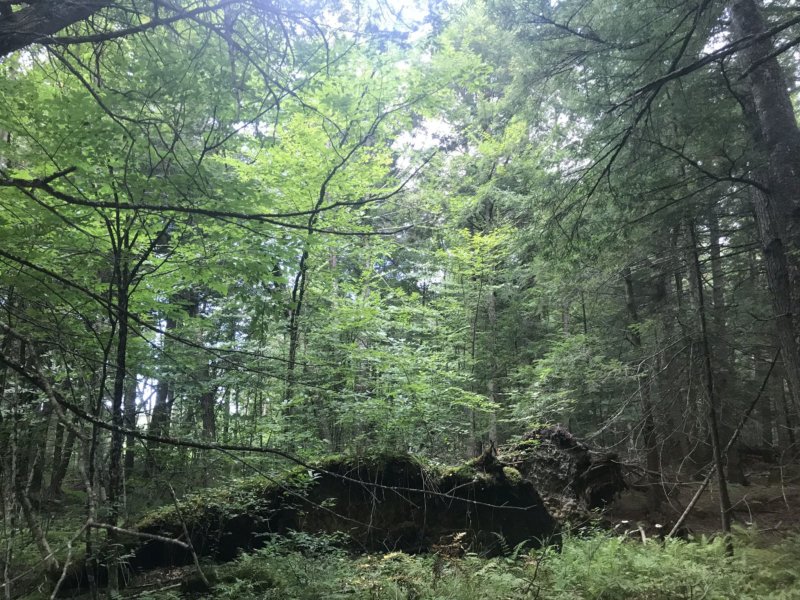Two Misconceptions About Forests
As I write this, Chittenden County is settling into winter, last night’s rain notwithstanding. As December progresses you might start to hear the buzzing of chainsaws and the thrum of skidders in the woods, logs piling up by the side of your road. You might see a forest that you know and love change; the forest floor dotted with bright-topped stumps and scattered with the tops and branches of trees.

Good forest management is more than just cutting valuable trees: it seeks to be regenerative, to improve conditions for wildlife, to make forests more resilient in a changing climate, to protect biodiversity, to benefit our communities and future generations. The ability to tell healthy forests from unhealthy forests — and responsible forest management from irresponsible forest management — is unintuitive to most people. It’s not something we’re born with – it’s something we need to develop. As such, we sometimes evaluate the health of our forests and the quality of forest management based on a couple misconceptions.
The first common misconception is that forests should look neat and tidy. Nothing could be further from the truth: forests which are resilient and adaptive in a changing climate, which provide diverse habitat for wildlife, which clean our air and our water, which sequester and store carbon, often defy our sense of order and aesthetics. Features that look “messy” to most people – like dead wood on the forest floor, dead-standing trees, big, old declining trees, an irregular gap-filled canopy and pockets of young trees and shrubs – fundamentally support the expansive web of life that is a forest. This doesn’t mean that any messy forest is good (a forest which has been poorly managed will probably also look messy) but it does mean that a forest isn’t unhealthy because it looks messy.
The second misconception about forests is that they never change. Because trees grow so slowly and live such a long time, it’s tempting to think that forests are defined by their stability, their ability to resist change. In reality, forests are dynamic, always changing, and they are defined by their resilience – their ability to stay healthy while they change. As much as the death of trees may seem sad and scary, it is a normal, natural, and even beautiful, part of how forests work.
Following forest management, as with a natural disturbance, the forest will look and feel different. When I manage forests, I embrace the messiness and the dynamism, telling loggers to leave treetops and limbs un-lopped, to leave dead trees in the woods, to create gaps of different shapes and sizes to encourage the development of different sizes, ages and species of trees. The result can be jarring: a tidy forest turned untidy, a familiar forest made different. Even if you know that healthy forests are messy and dynamic, as you walk through a freshly managed forest next spring it may be hard to understand how this could ever be part of something beautiful.
While you can appreciate some of the benefits of forest management, like local renewable resources, right away, the ecological benefits take time to reveal themselves. Forest managers in Vermont rely on natural regeneration rather than planting trees, and so – as in a forest following a windstorm – there is a lag between the disturbance and when its benefits are realized. This lag can be a stressful time, and so in the years following management we need to remind ourselves to be patient, to let the forest’s natural resilience work.
This summer, I walked through an area managed three winters ago at the Hinesburg Town Forest. In July the area was exploding with life, green filling every space. Raspberry and blackberry canes looped around young trees, goldenrods and asters blooming in yellow and purple. Birds nested in the thick understory and dove through canopy gaps, catching insects on the wing. Salamanders wriggled into rotting wood as the trees above them reached their limbs up into the blue sky.
Of the many lessons that forests can teach us, cultivating patience and equanimity are perhaps two of the most important. Like many of the best things in life, forests and forest management are complex and nuanced, and learning to appreciate them takes time.
Ethan Tapper is the Chittenden County Forester for the Vermont Dept. of Forests, Parks and Recreation. See what he’s been up to, check out his YouTube channel, sign up for his eNews and read articles he’s written.

